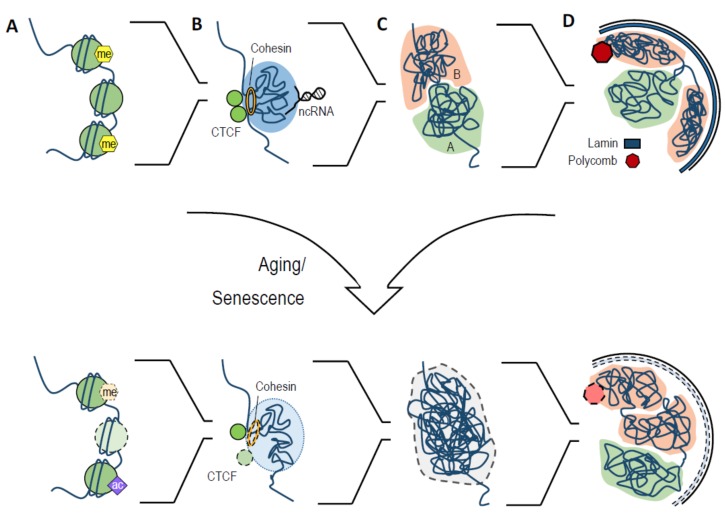Figure 1.
An overview of chromatin structural changes during aging and senescence. (A) Chromatin structural changes at the nucleosome level, including global loss of core histones, epigenetic changes, and nucleosome repositioning. (B) Topologically associating domains (TAD) structure and anchor proteins changes. The levels of TAD boundary anchor proteins such as CTCF and cohesin are reduced during aging, with altered local chromatin interaction changes. (C) Chromosome compartment changes. Global loss of chromosome compartment occurs at late passages of Hutchinson–Gilford progeria syndrome (HGPS) fibroblasts. A small subset of chromosome compartments go through compartment switching in premature aging disorders and senescence. (D) Large-scale chromatin rearrangements. The reduction of lamin proteins during aging and senescence leads to the detachment of lamina-associated domains (LADs) from the nuclear lamina. Depletion of Polycomb proteins, which are also involved in the genome 3D organization, is observed in senescent cells. Me: methylated histone; ac: acetylated histone; ncRNA: non-coding RNA.

